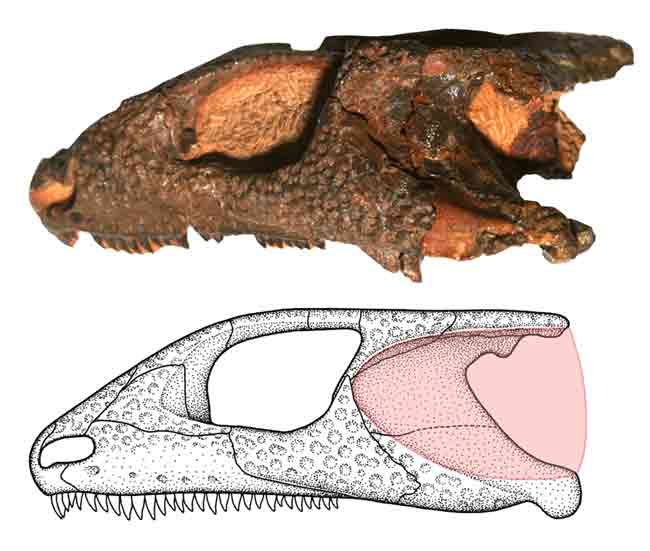First 'Modern' Ears Found

The first backboned creatures to conquer land were largely deaf, lacking anatomical features whereby tiny bones help transmit airborne sounds into the inner ear. Advanced hearing was assumed to have evolved shortly before the emergence of dinosaurs, roughly 200 million years ago.
Now, scientists have found that weasel-sized prehistoric reptiles from Russia apparently possessed the first modern ears 260 million years ago—perhaps the first-known specialized trait for living in the dark.
Paleobiologists uncovered large-eyed fossils of these reptiles with surprisingly advanced ears near the Mezen River in central Russia. They are a kind of now-extinct reptile called a parareptile.
The outside of the cheek in the reptiles was covered with a large eardrum. This structure was connected with the inner ear and the brain with a bone comparable to those in human ears.
The scientists estimate the reptiles of the Permian Period—numbering at least six species that reached roughly 1.5 feet (50 centimeters) in length—were able to hear at least as well as modern lizards.
"Animals with an excellent sense of hearing such as cats, owls, or geckos are all active at night or under low-light conditions," said researcher Johannes Mueller, a vertebrate paleontologist at Humboldt University in Berlin. "And maybe this is what these Permian reptiles did too."
The comparatively large eye sockets found in the new fossils, another typical feature of vertebrates living in the dark, suggest these reptiles might indeed have been among the first backboned land creatures to pursue a specifically nocturnal lifestyle.
Sign up for the Live Science daily newsletter now
Get the world’s most fascinating discoveries delivered straight to your inbox.
These findings suggest early terrestrial animals and ecosystems were not as primitive as once assumed. "Although efficient hearing abilities and a nocturnal lifestyle seem to be nothing unusual in our modern world, they might have had revolutionary effects at this early time," Mueller told LiveScience.
These reptiles are part of a completely extinct lineage distantly related to turtles, lizards, snakes, crocodiles, birds and dinosaurs. The advanced ears we see today are thought to have evolved mostly independently of each other, Mueller explained.
"It would be interesting to investigate how often and when exactly modern ears evolved. For example, do the ears of modern lizards, crocodiles and birds have a common origin or not?" Mueller said.
Mueller and colleague Linda Tsuji detailed their findings online Sept. 11 in the journal PLoS ONE.
- Why Screaming Doesn't Make You Deaf
- Amazing Animal Abilities: Senses We Don't Have
- Sharks' Sixth Sense Related to Human Genes












